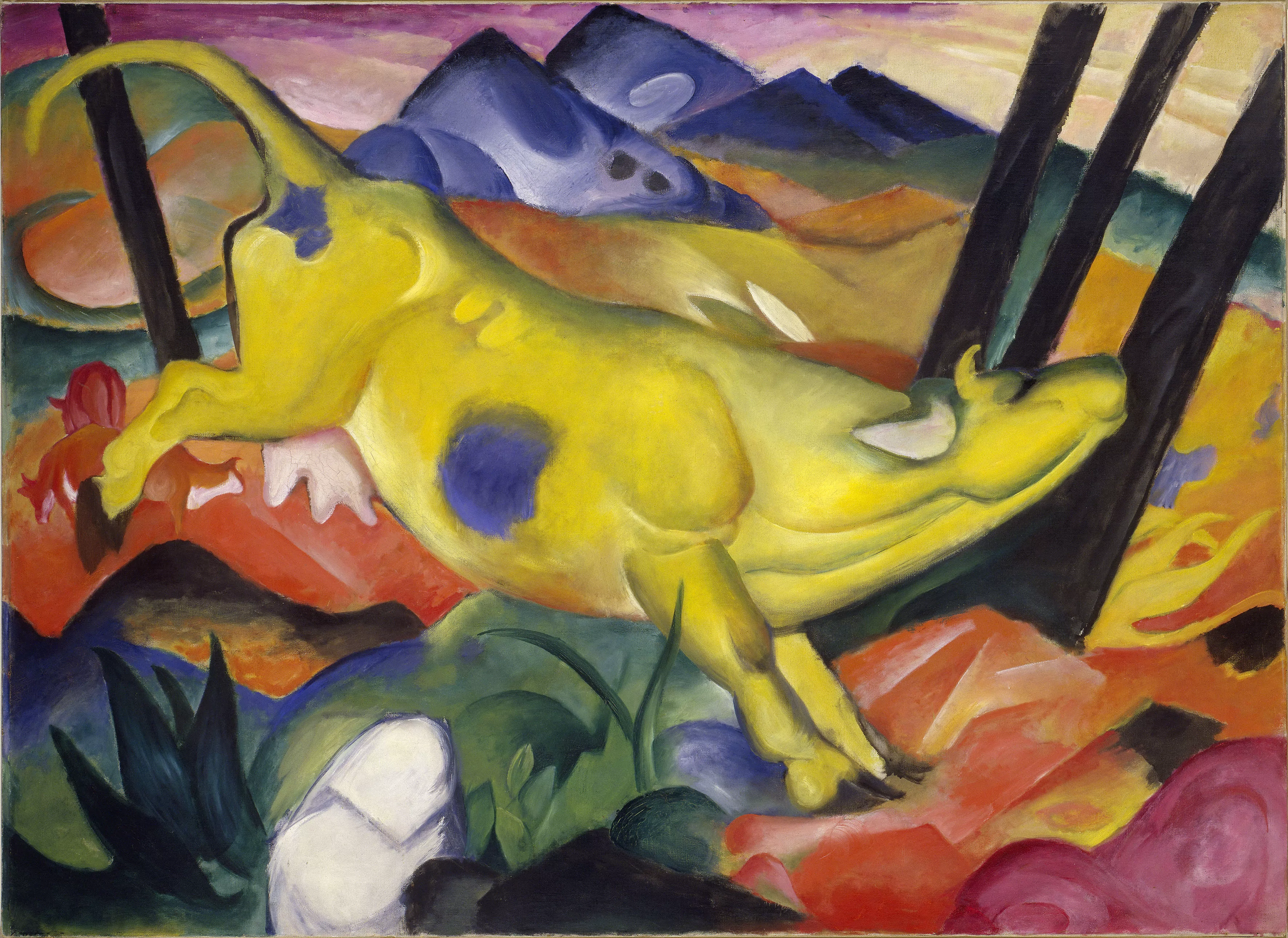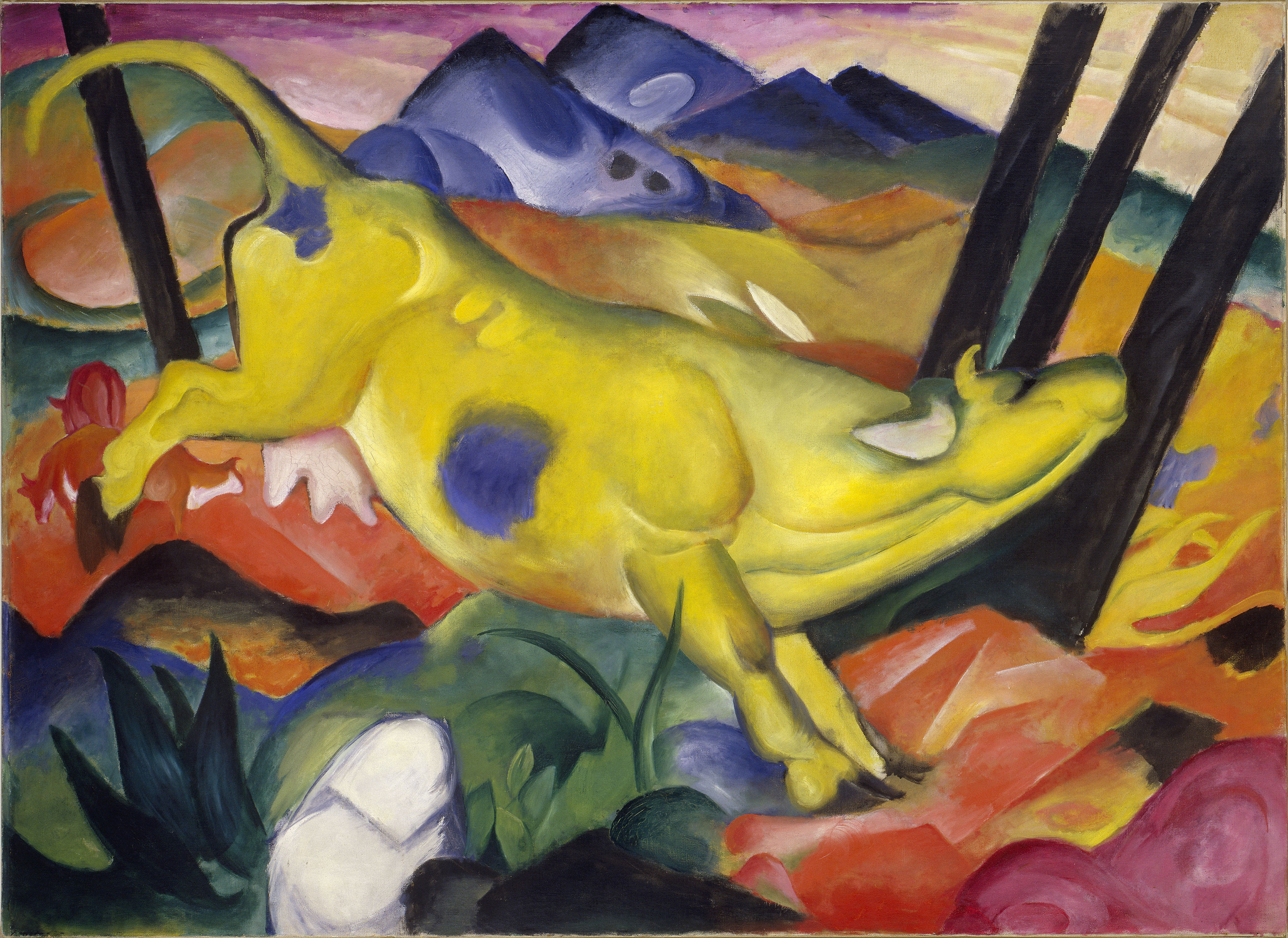


To Franz Marc, animals were the last pure consciousnesses. “People with their lack of piety, especially men, never touched my true feelings, but animals with their virginal sense of life awakened all that was good in me.” Marc was a philosopher and seminary student before he was an artist, and his investigations in the nature of the human mind left him disillusioned. Marc devoted his entire artistic career to painting animals, capturing foxes, horses, and this happy cow in bold colors.
Color was sacred and deeply symbolic to Marc. During his bromantic collaboration with Vasily Kandinsky, a partnership they called The Blue Rider, the two artists developed a theory of Farbsymbolik, or color symbolism, where specific hues corresponded to metaphysical concepts. Masculine energy was blue, as seen in Marc’s paintings of horses, and yellow, which Marc called a “gentle, cheerful and sensual” color, was blue’s complement representing femininity.
The frolicking bovine above was painted in 1911, the same year Marc married his second wife, the artist Maria Franck. Applying Marc’s color symbolism, art historian Mark Rosenthal proposed that the work is a private wedding picture, with Maria as the joyous yellow cow and Franz as the sturdy blue mountains in the distance.
